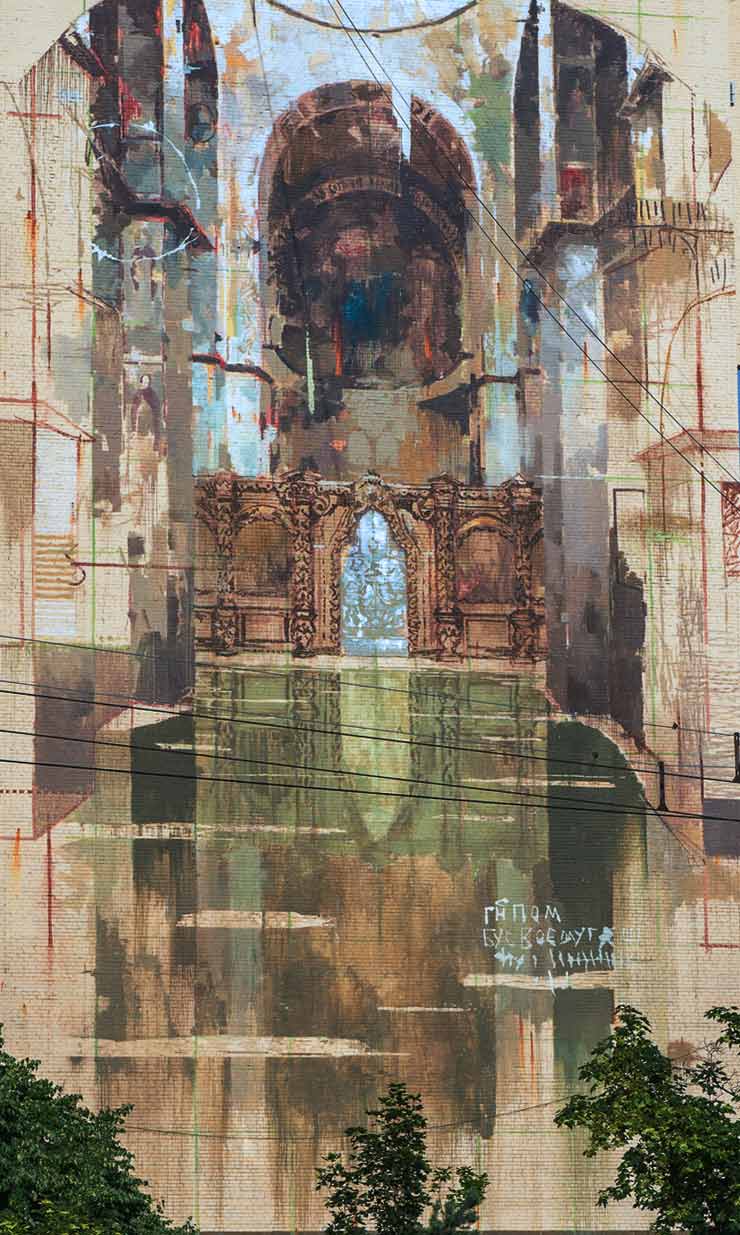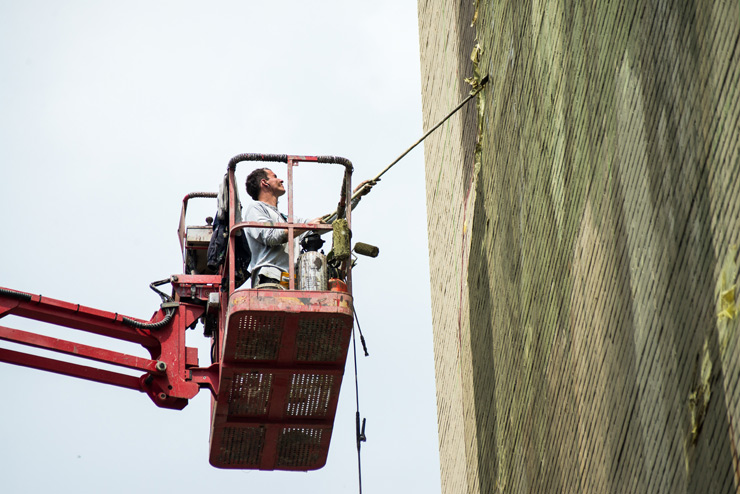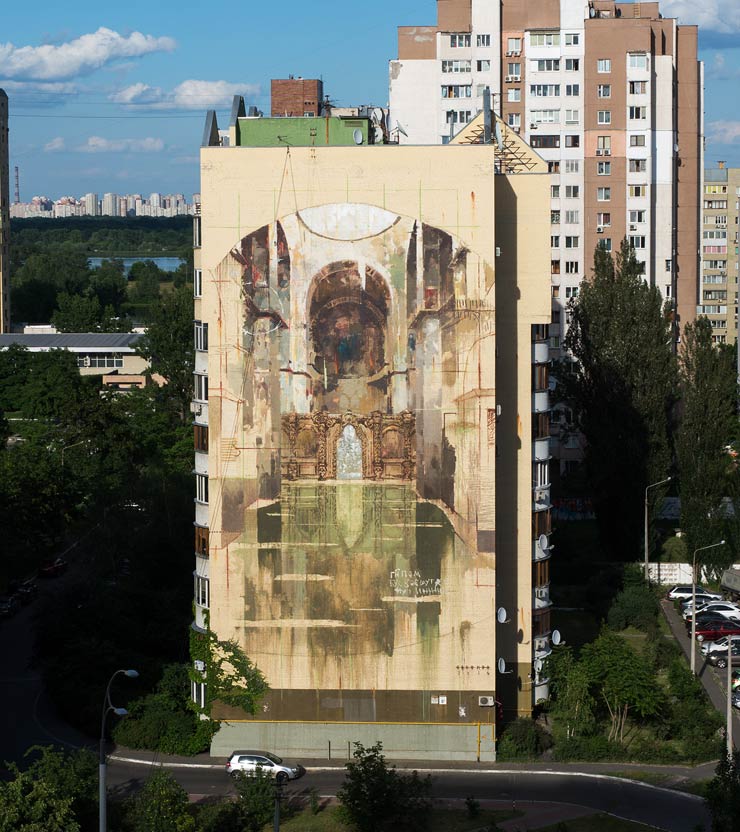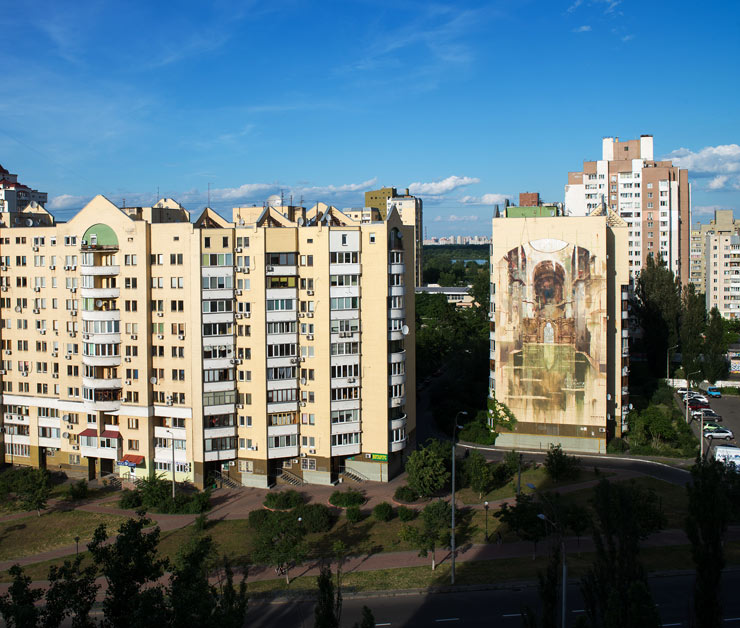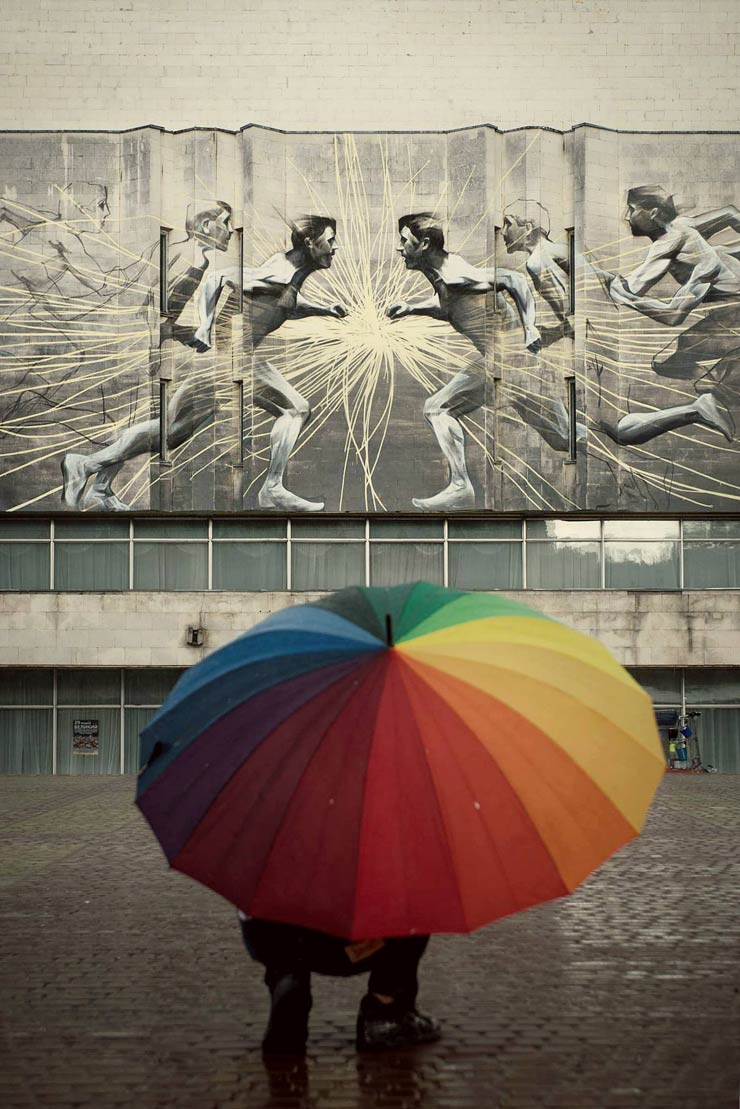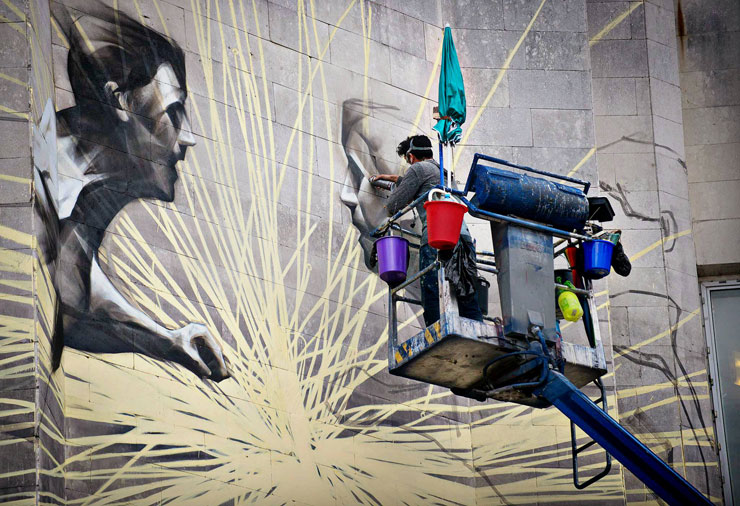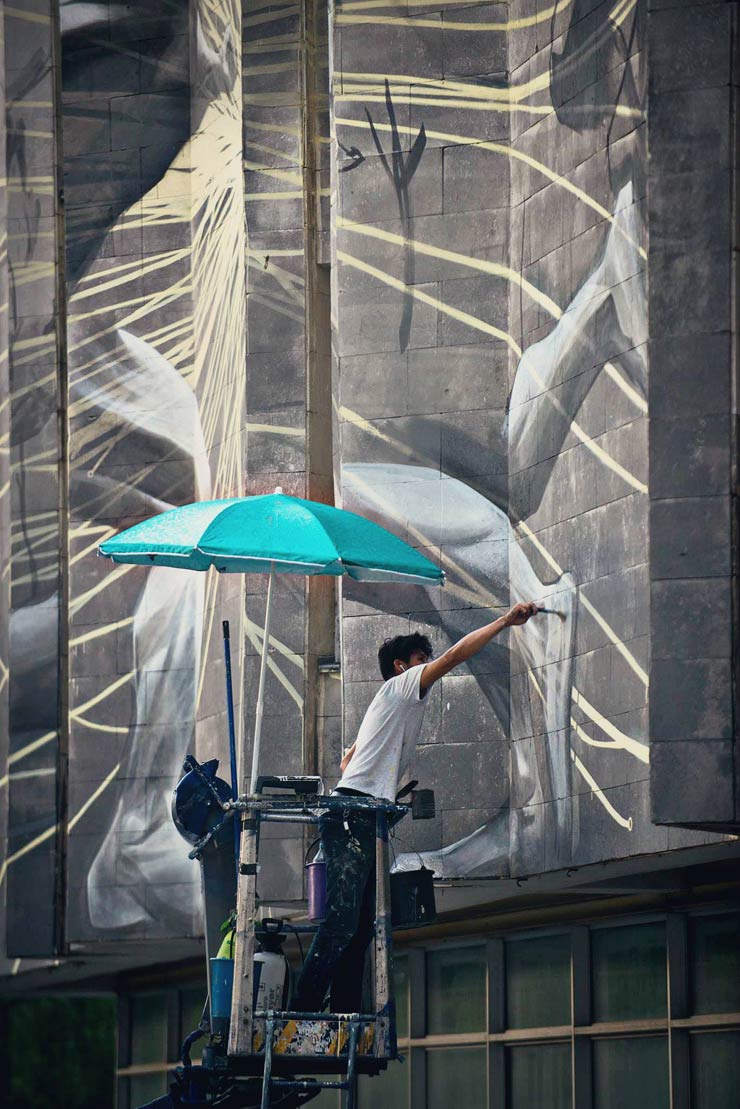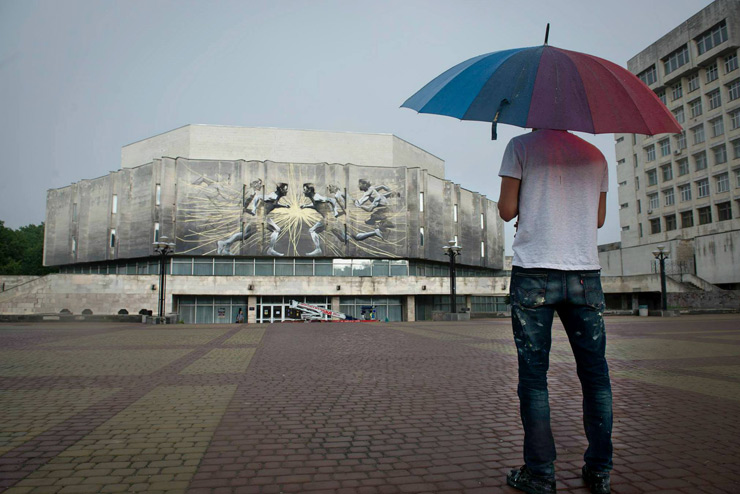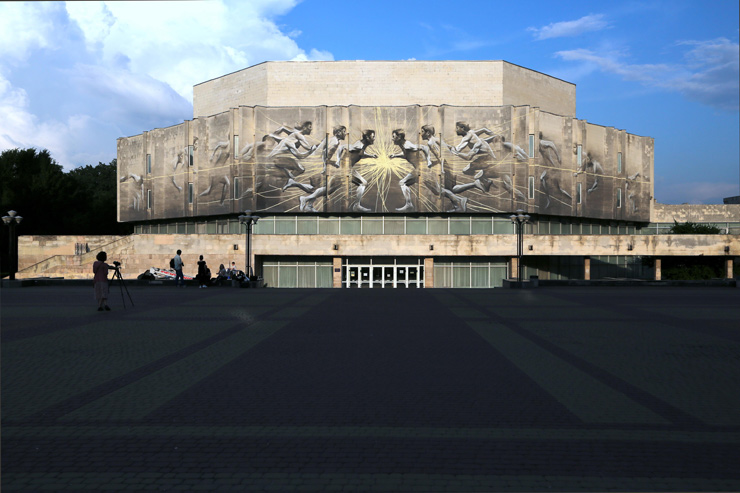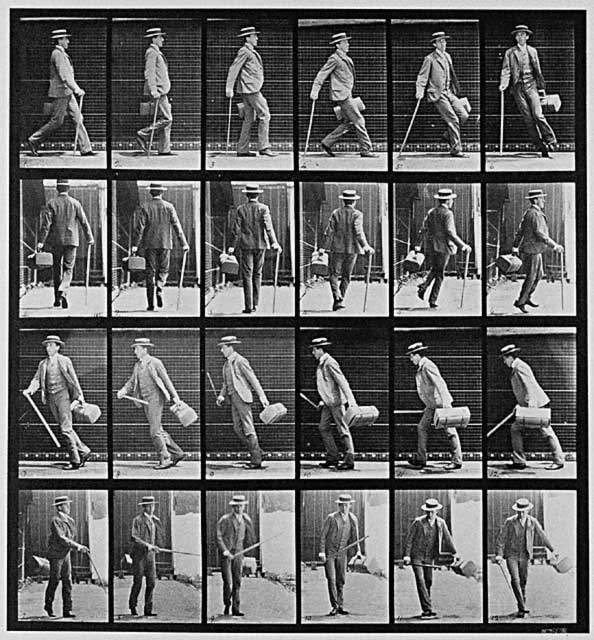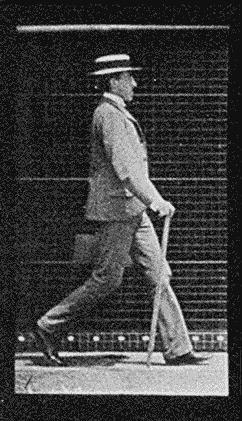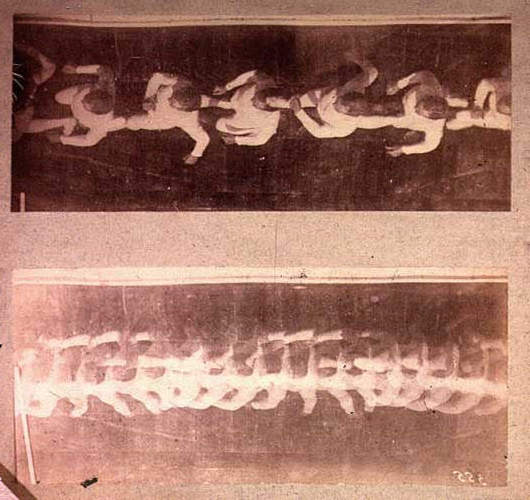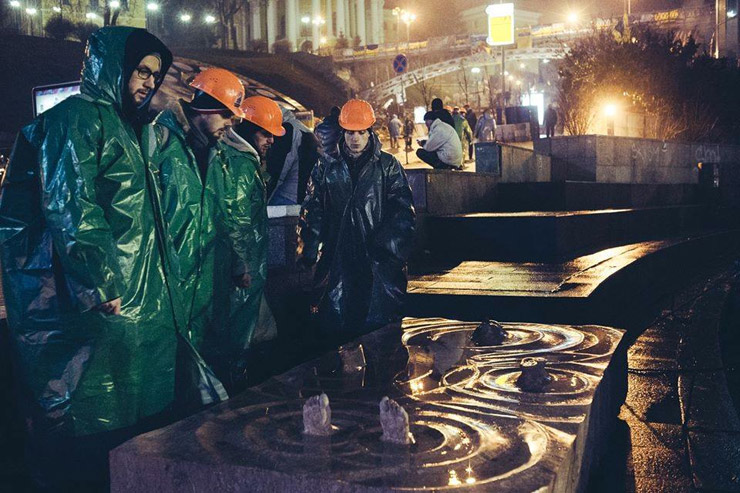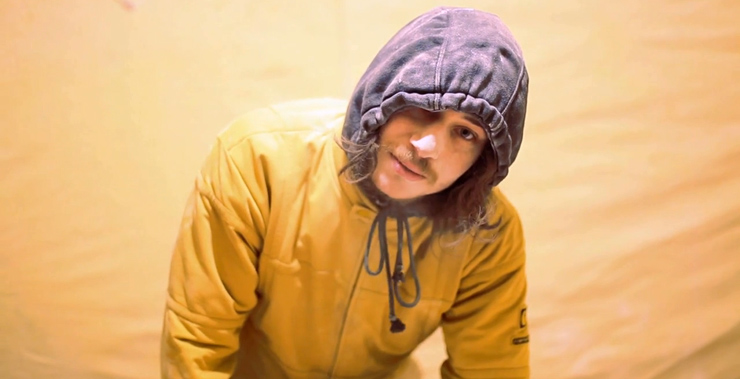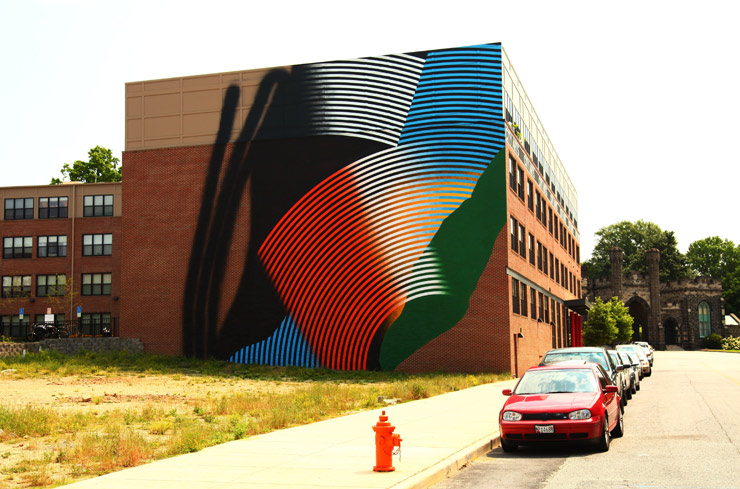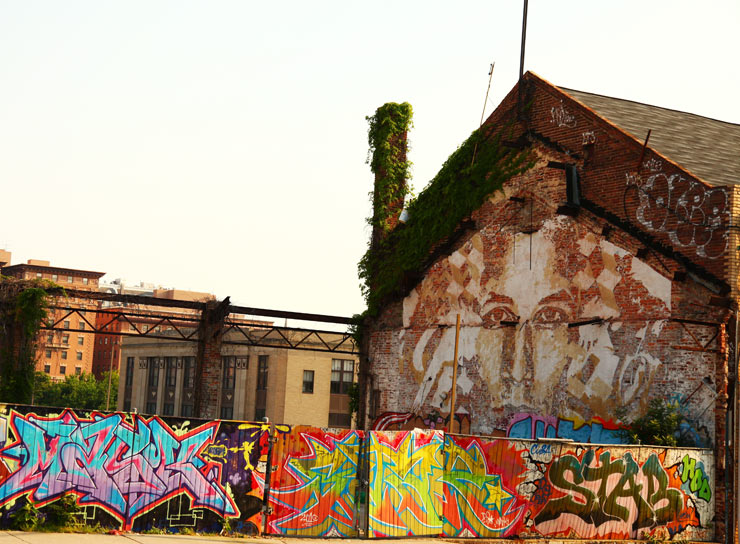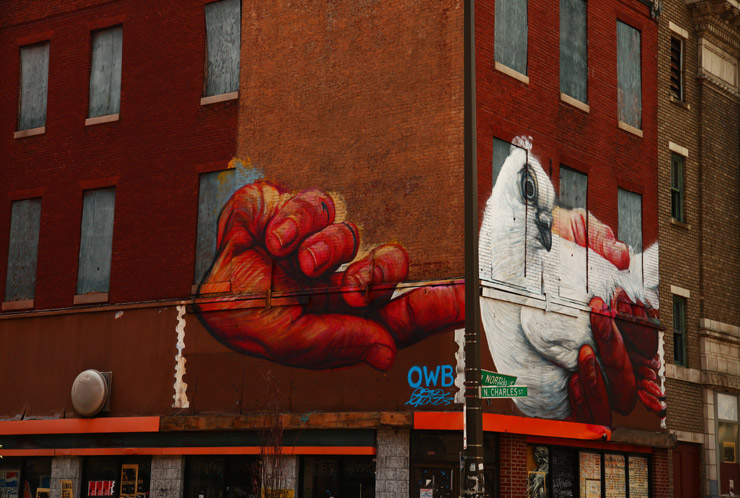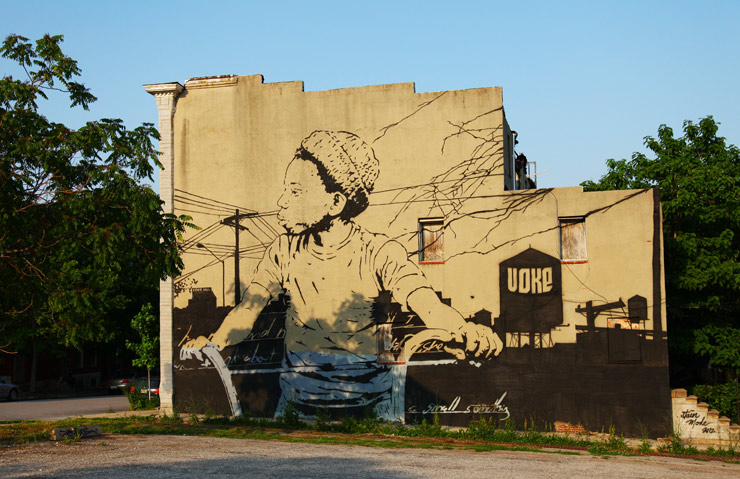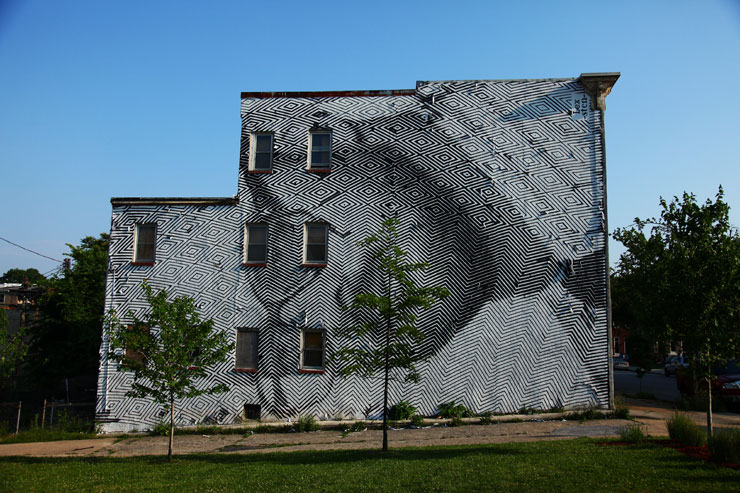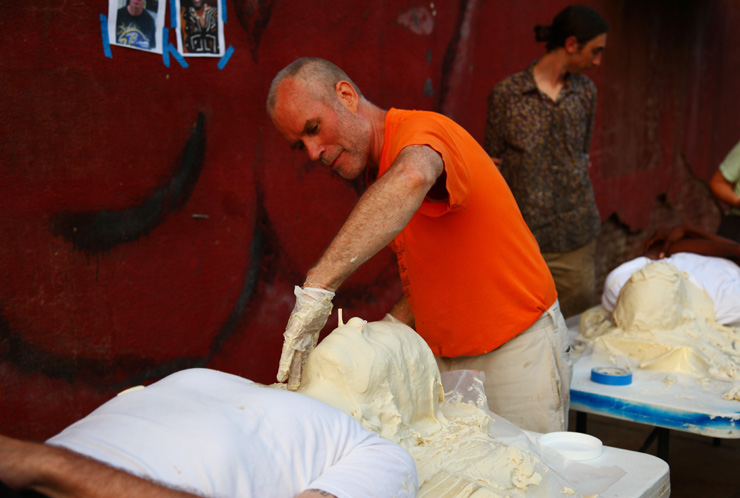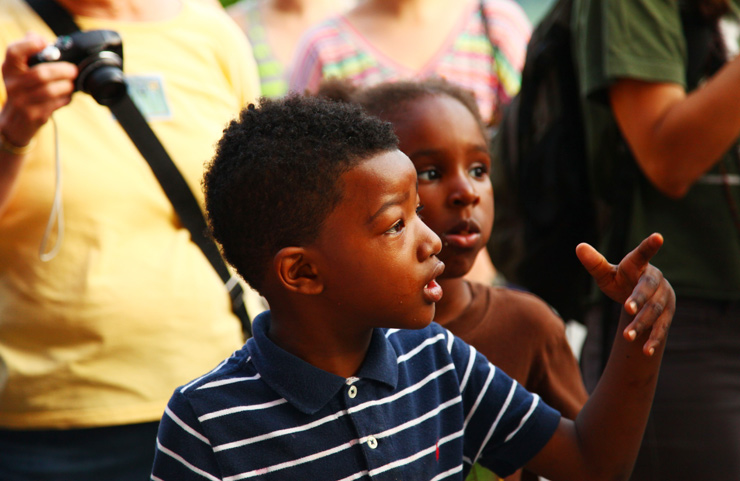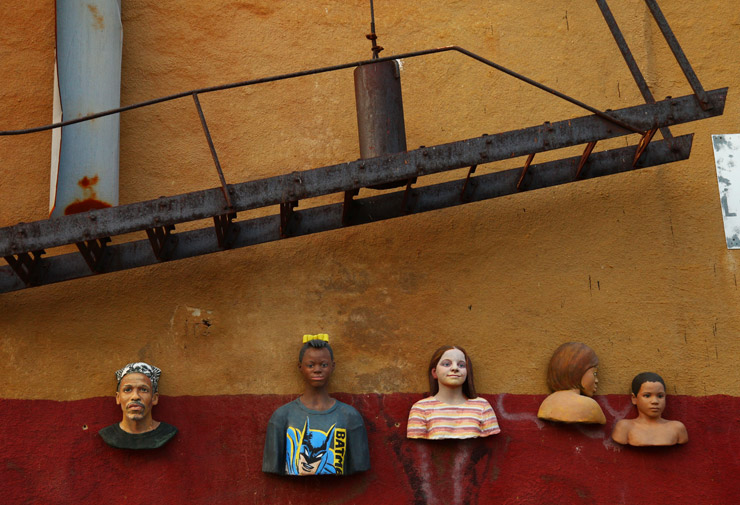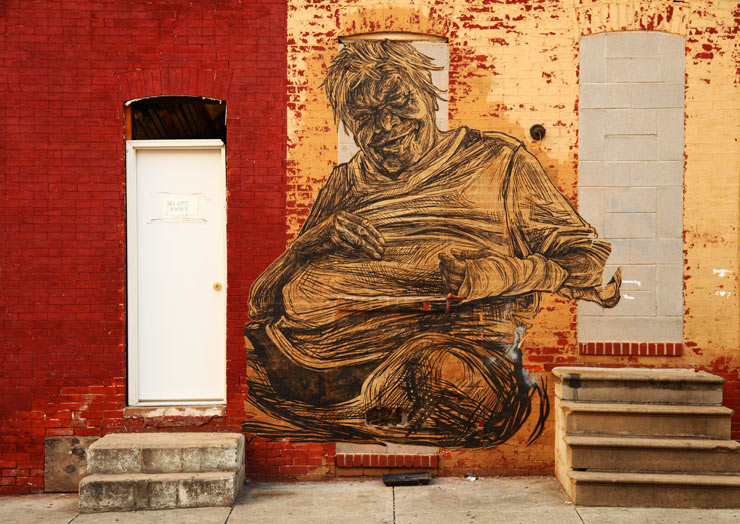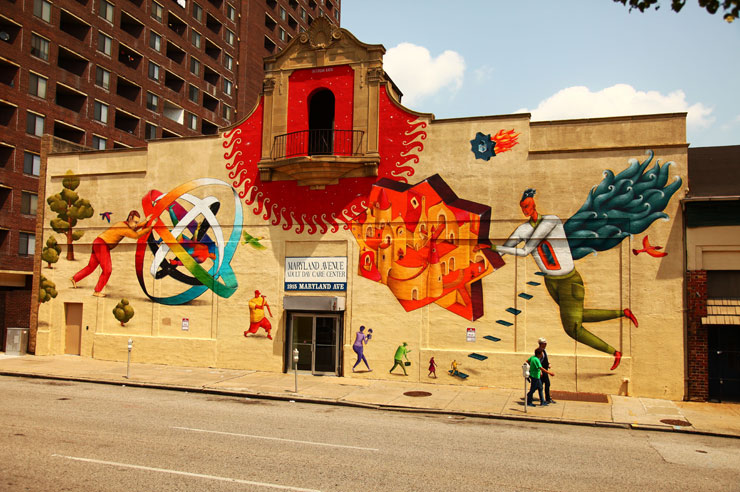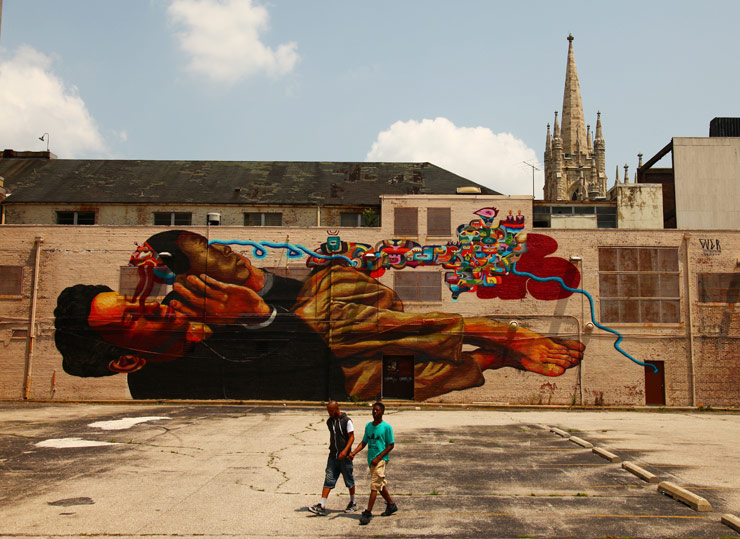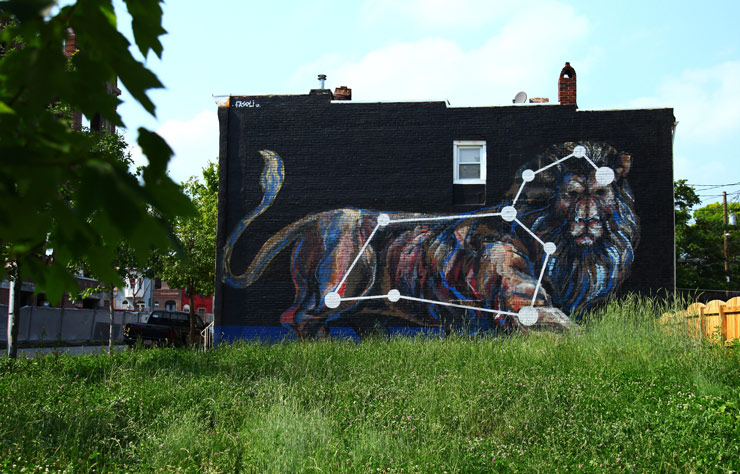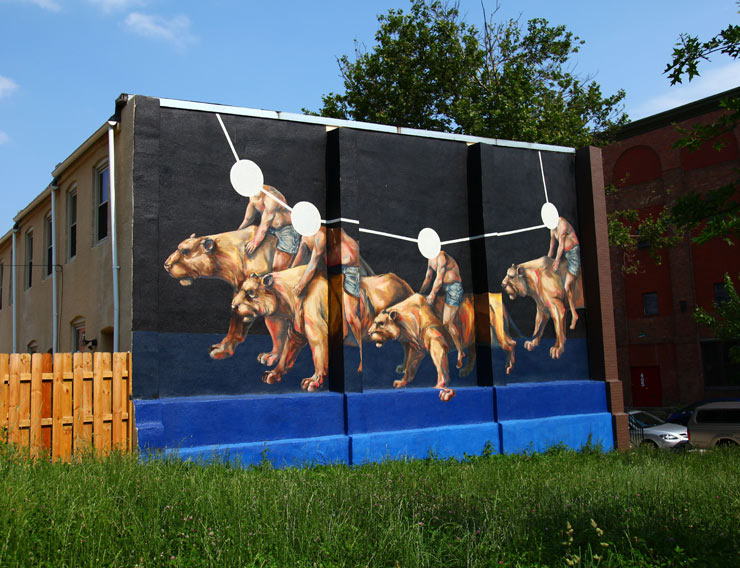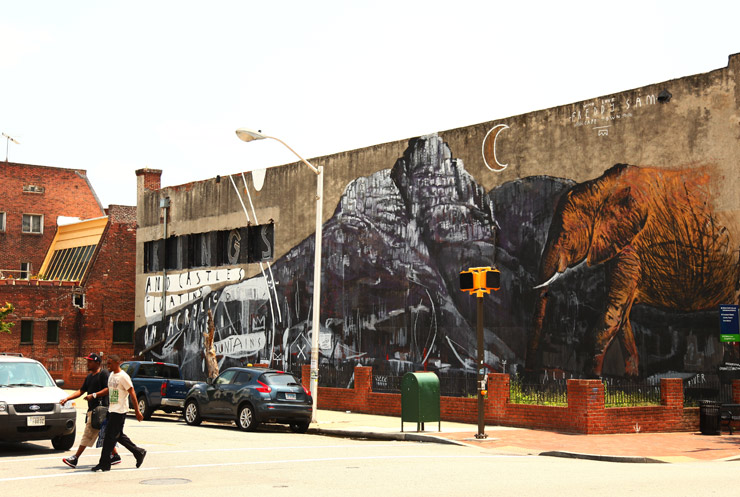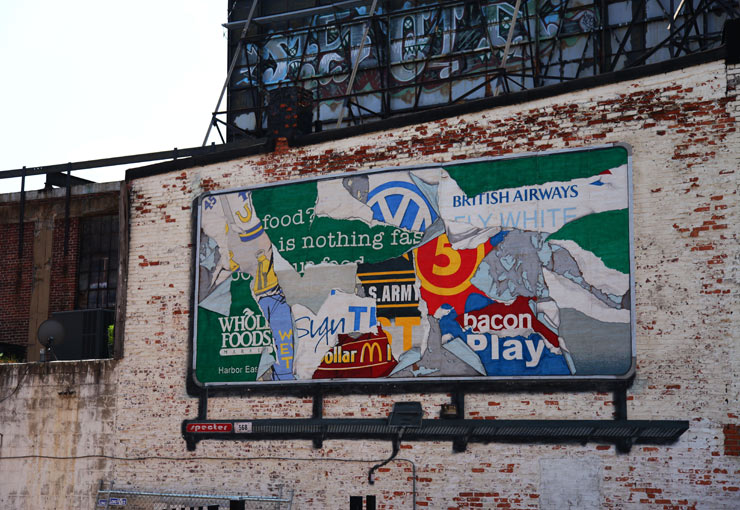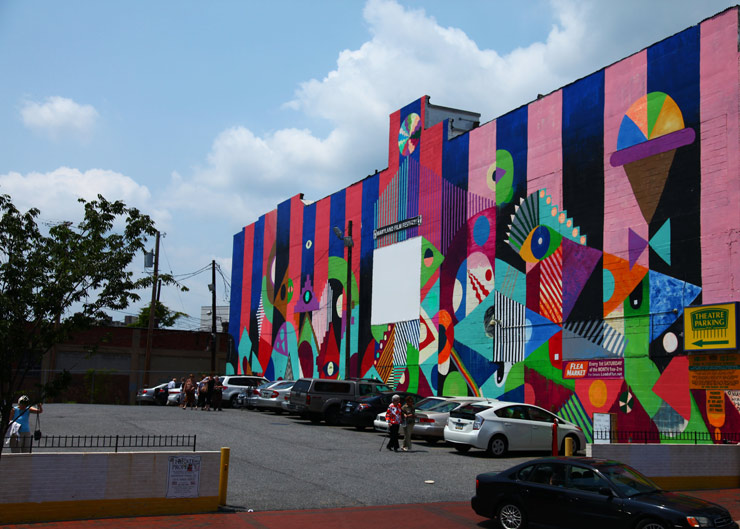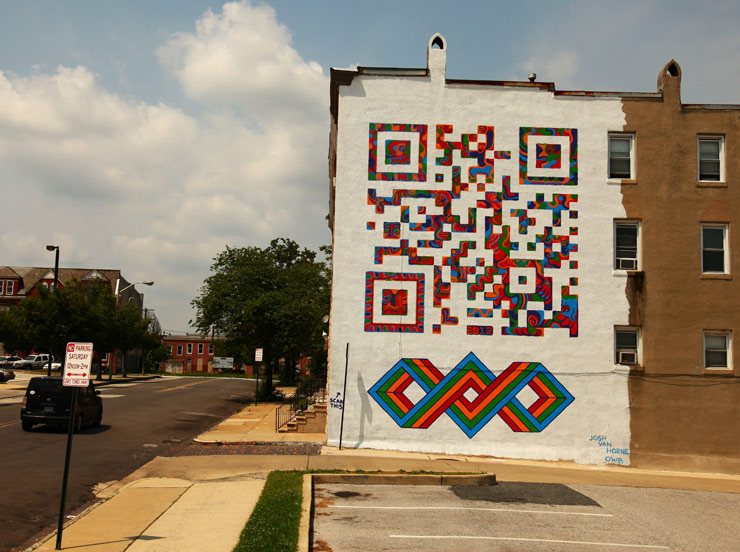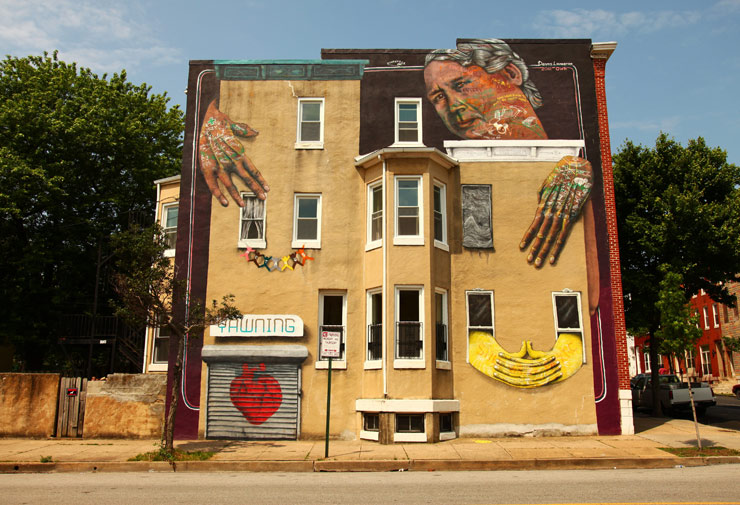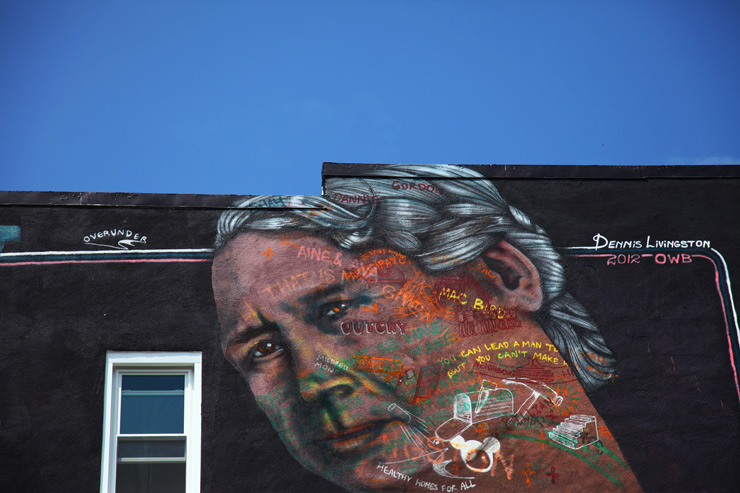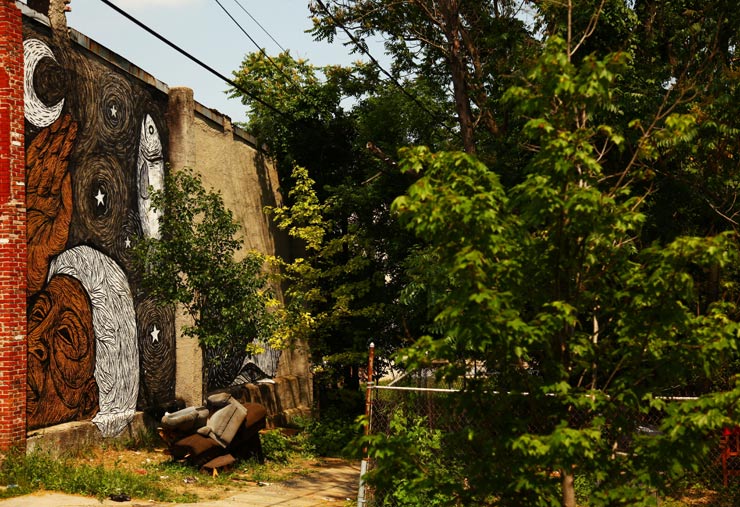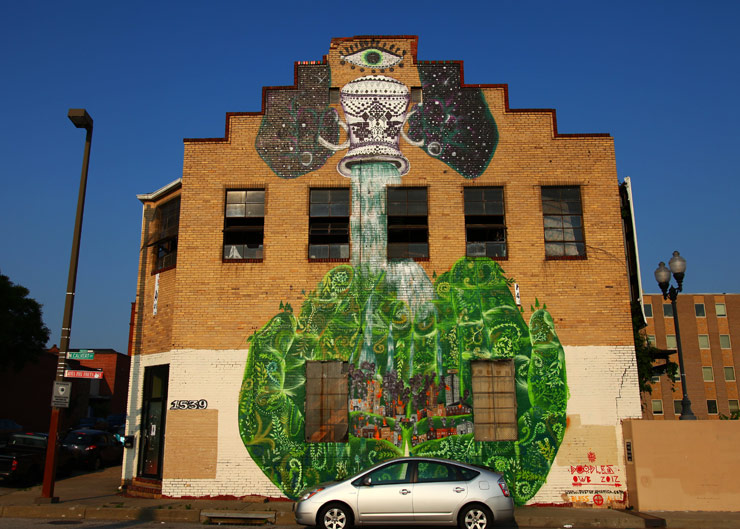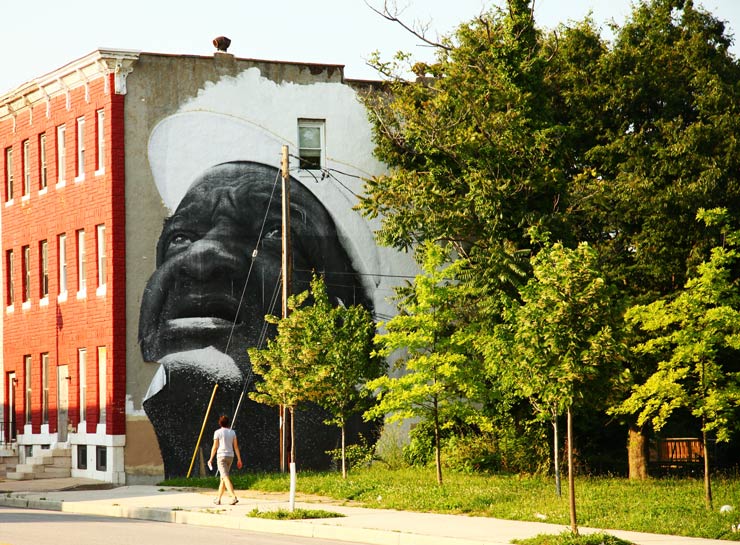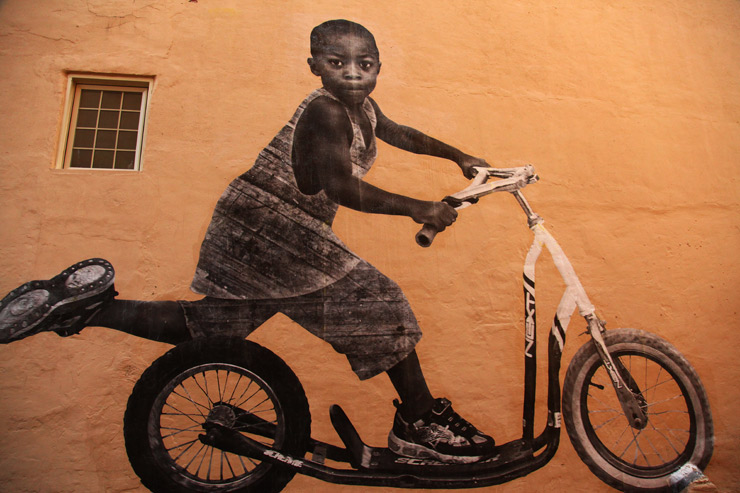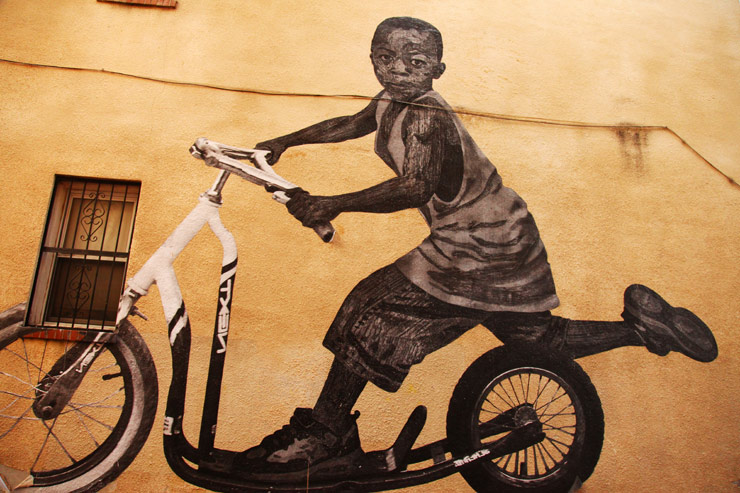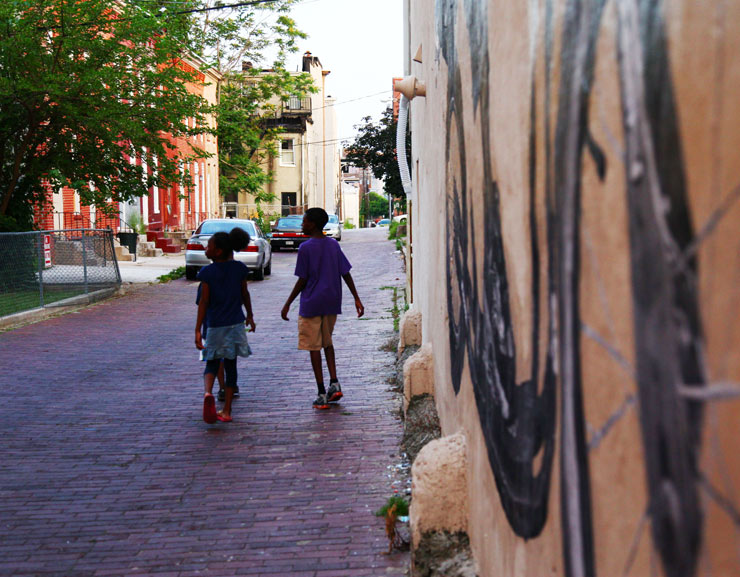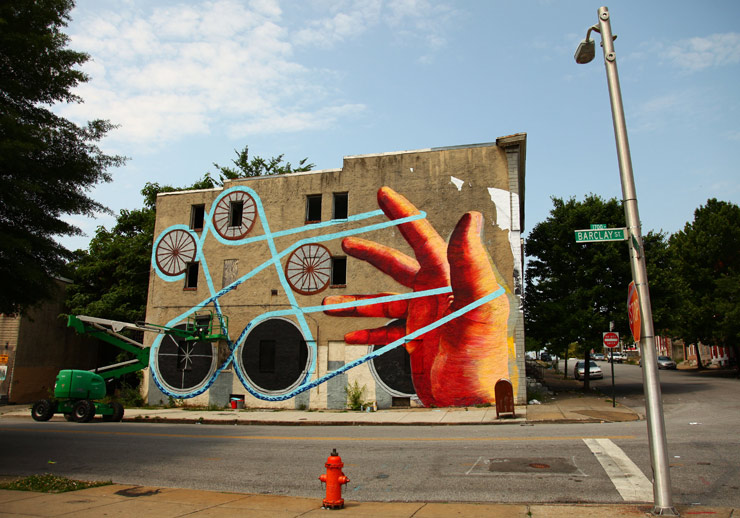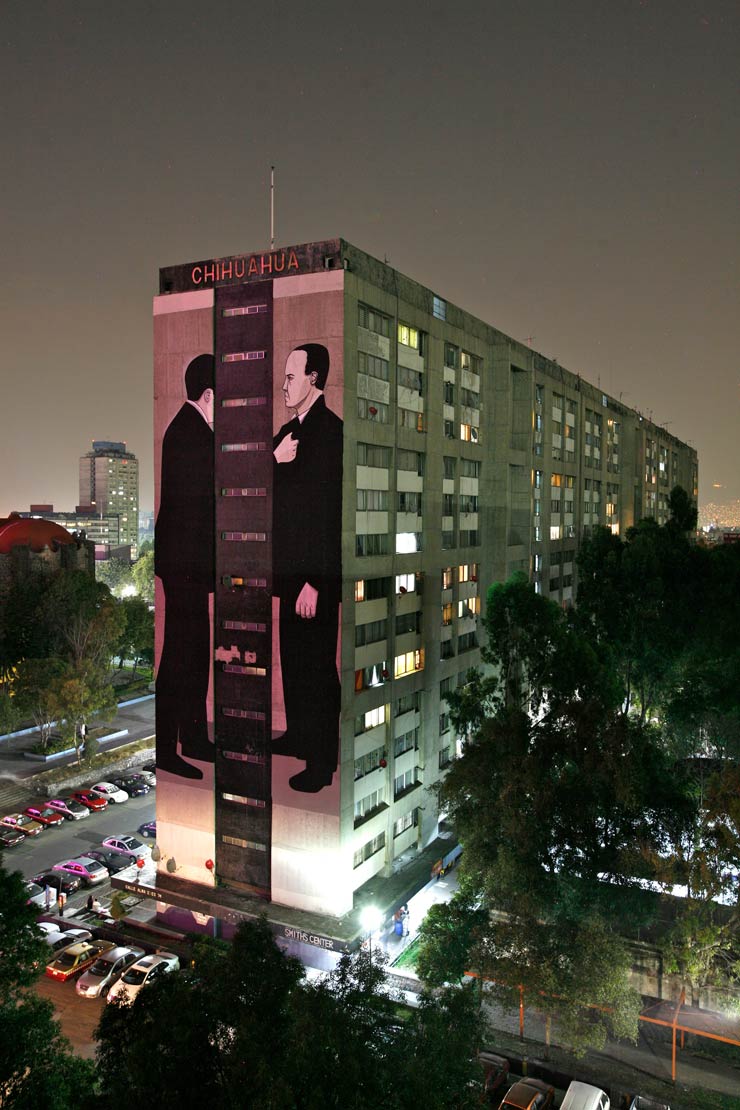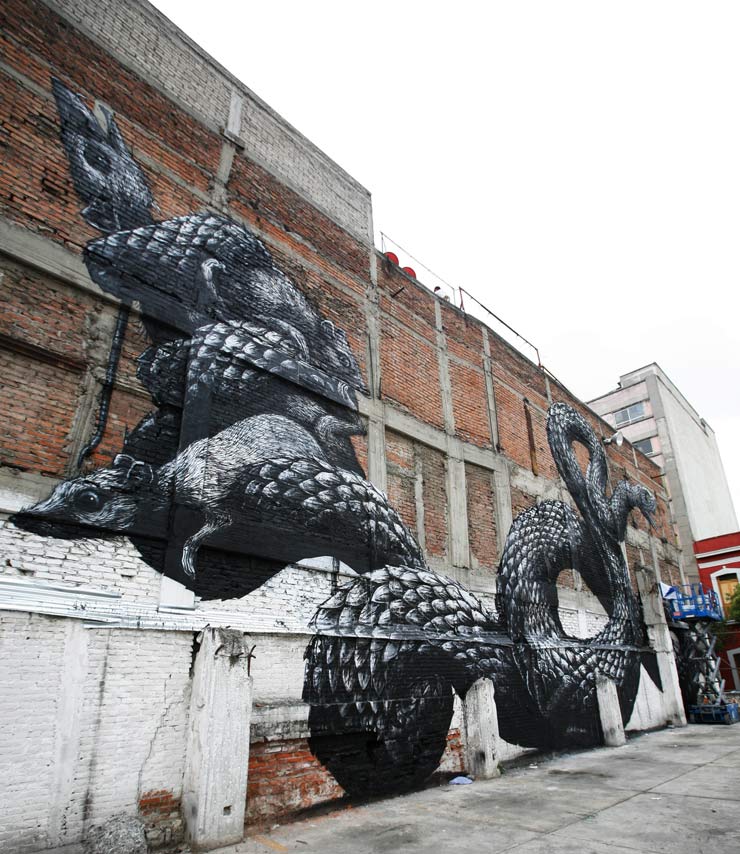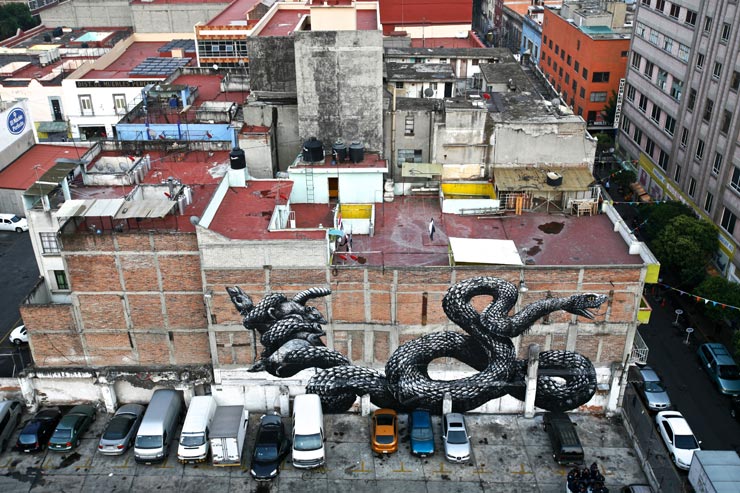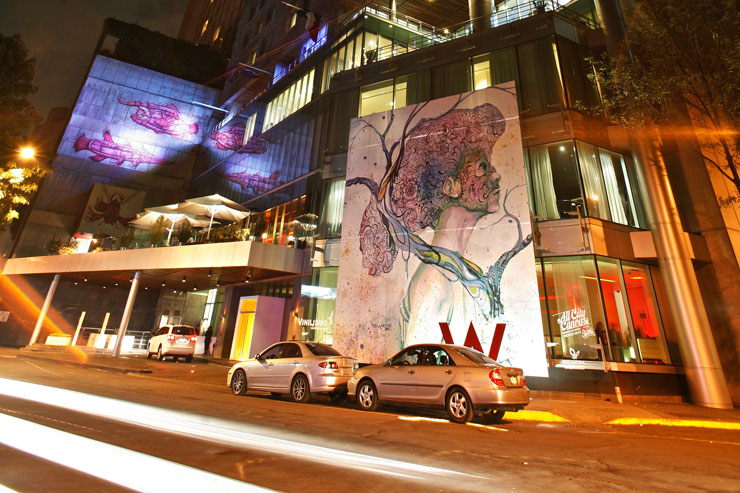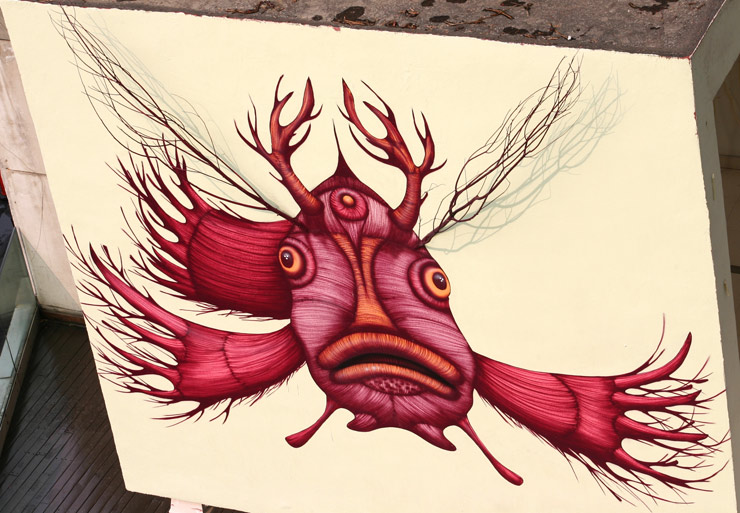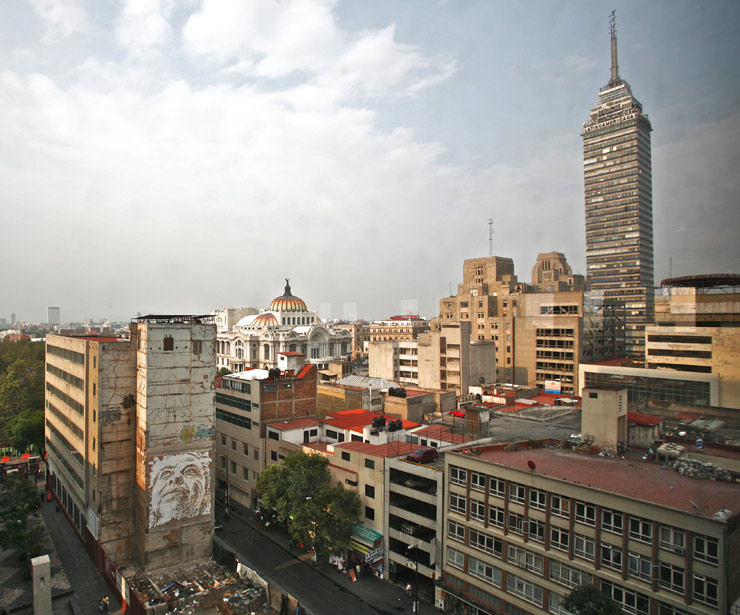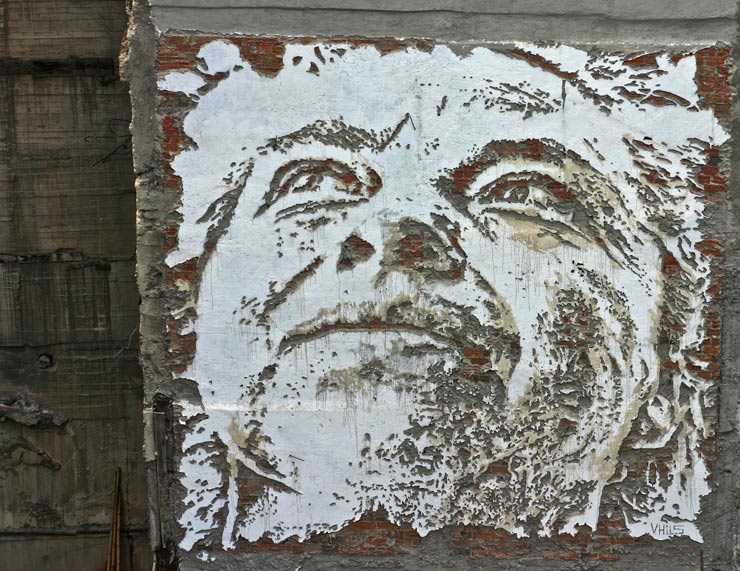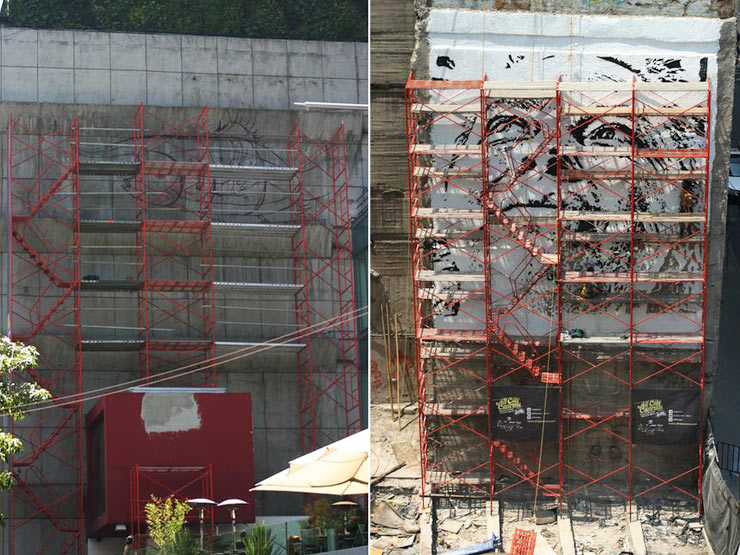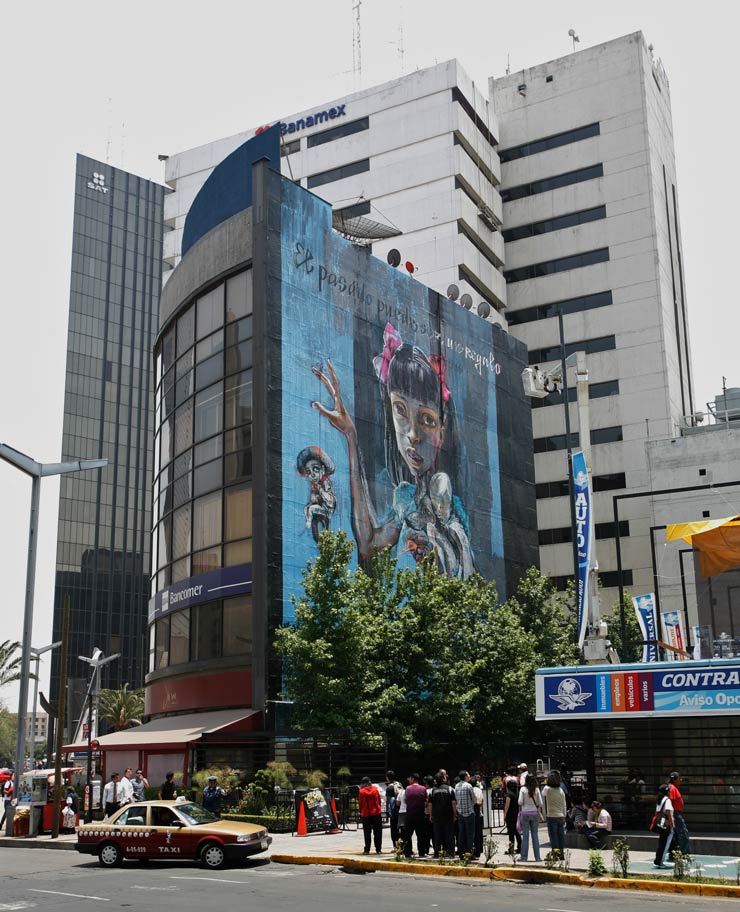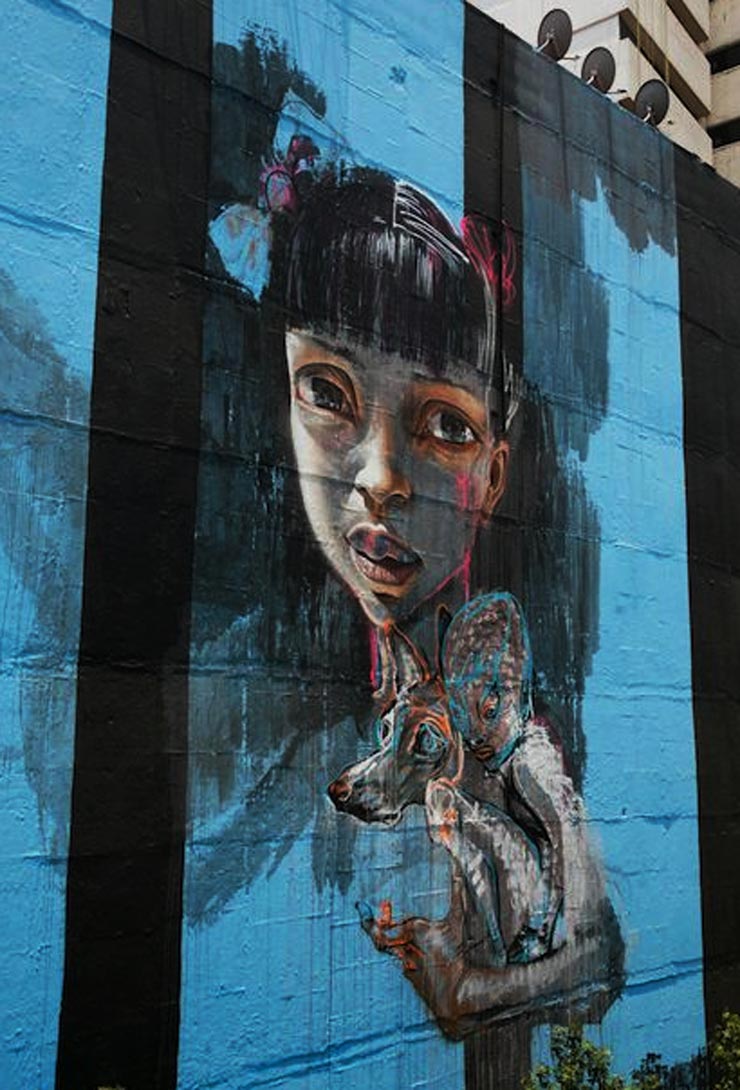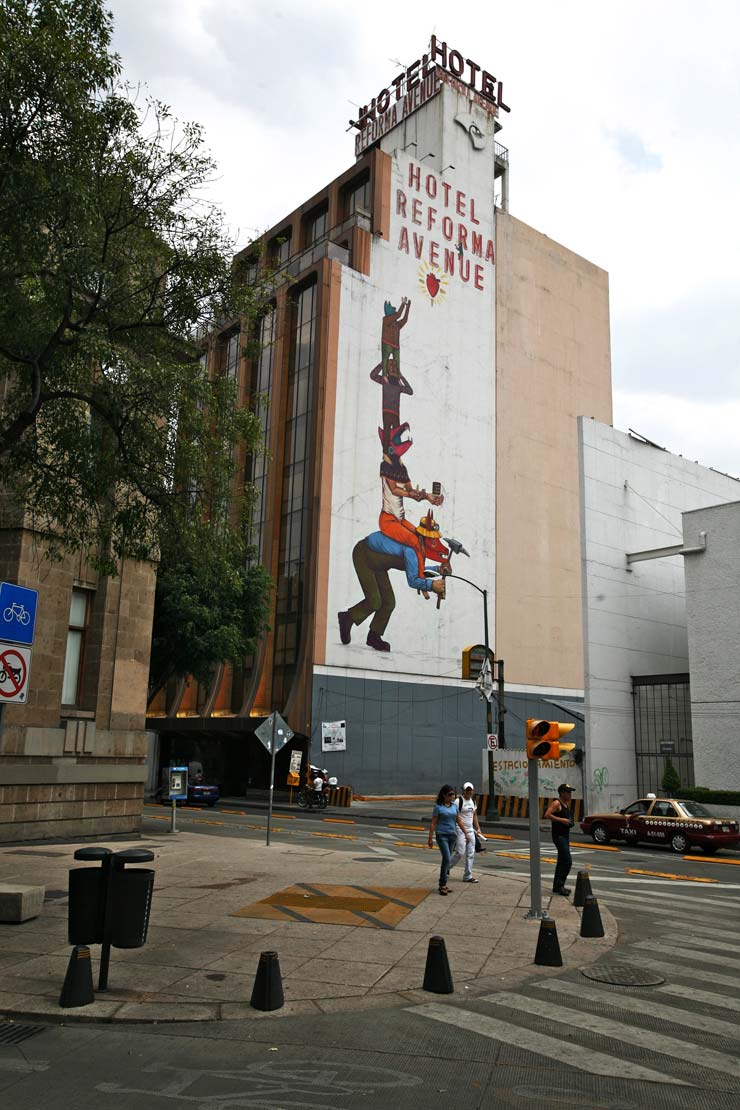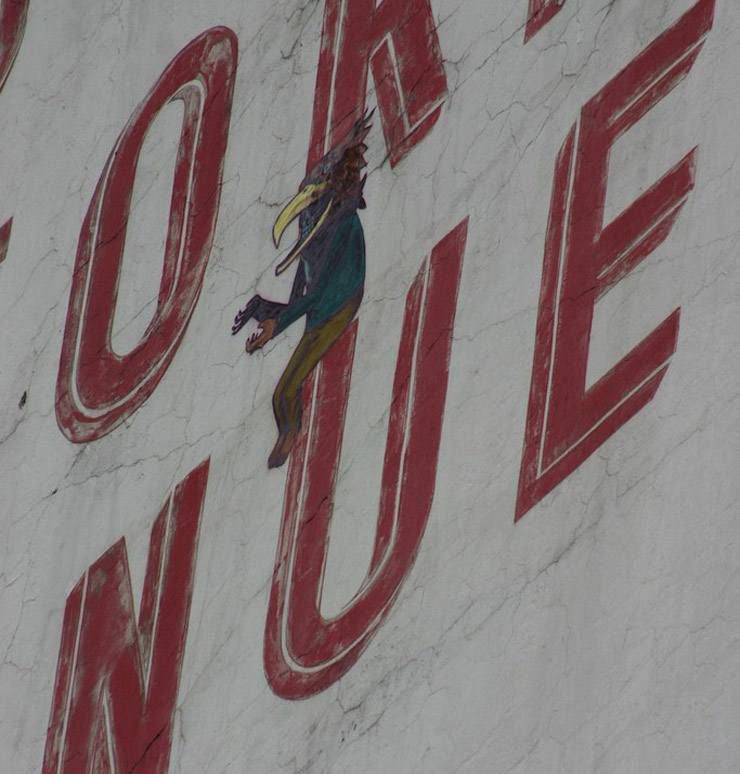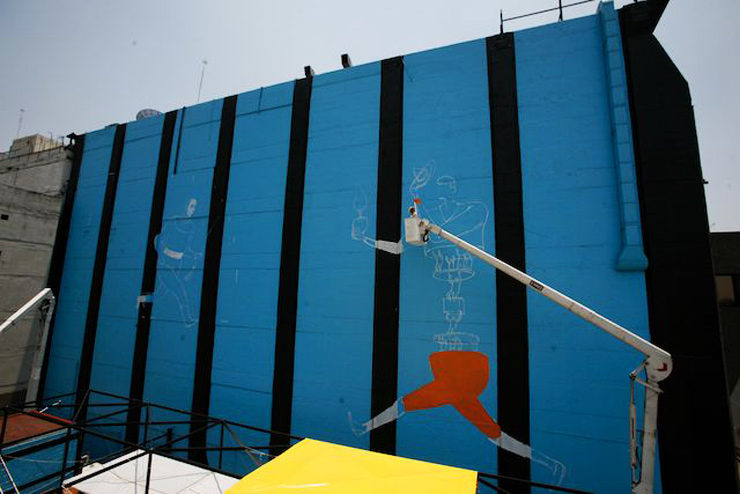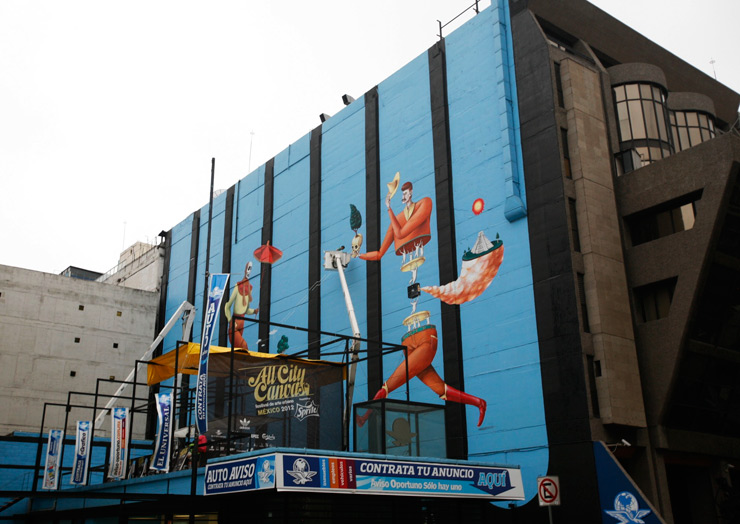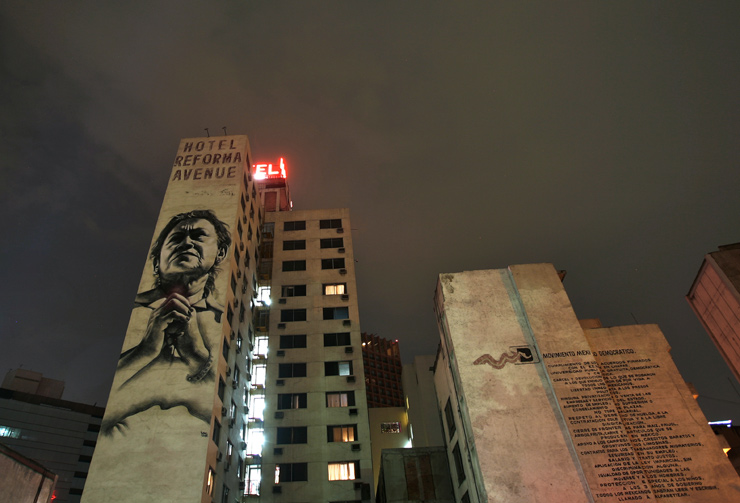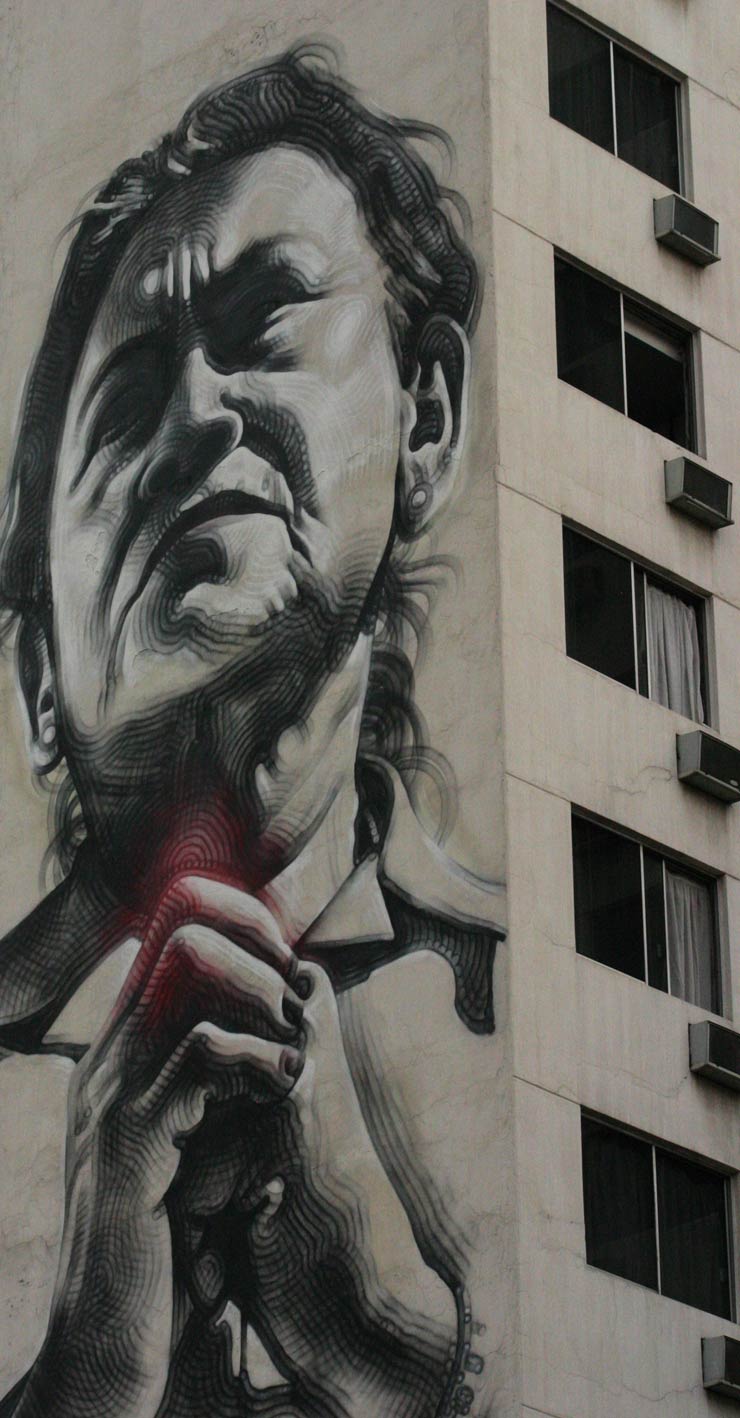French Street Artist Trucks 4 Ton Marble Sculpture with Kiev Crowd Watching
The Prime Minister and his cabinet have quit and the freezing crowds are still demanding the resignation of President Viktor Yanukovych. Here in sub-zero Independence Square amidst the Molotov cocktails and burning tires appears a “New Ukraine,” thanks to the just carved sculpture of the same name. Street Artist Roti channeled his rebellious graffiti ethos into this project featuring the image of a Ukrainian woman emerging from the depths. He hopes to inspire the demonstrators who have been mobilized for two months plus.
Inflamed since their presidents’ sudden withdrawal from a trade agreement with the European Union (EU) in November, most say the real oxygen that is feeding this populist fire is disgust with a political class that became corrupt. With this unsanctioned gift of public art Roti examines and tests the ambiguous nature of illegality that also possesses beauty, claiming public space for a rippling people’s movement that now looks like a revolution.
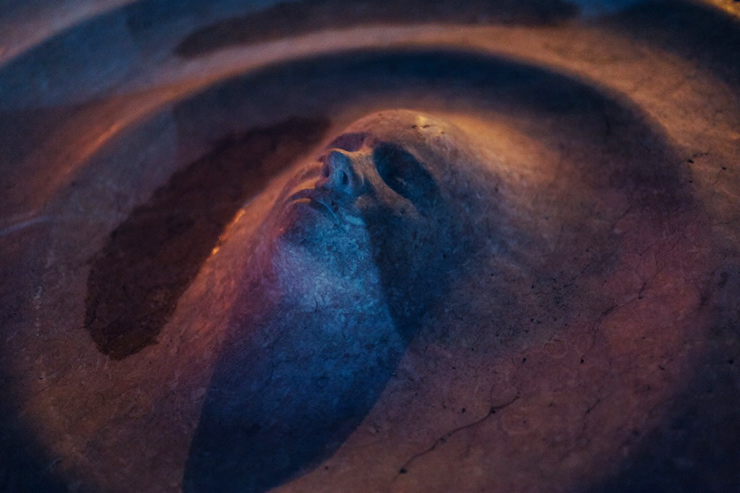
“New Ukraine” by Roti (photo © Chris Cunningham)
Writer, scholar, and occasional BSA contributor, Alexandra Parrish was perfectly placed in Kiev this winter to see the uprisings swell and to witness the carving out of this now historical public sculpture by Roti, as well as its placement. We are pleased that she shares with us today an essay that provides context and background for Roti’s gift to The Euromaiden (Євромайдан, #EuroMaiden #EuroMaidan) and to the related events.
Roti’s “New Ukraine”
by Alexandra Parrish
“Throughout history, art has served as a representation of religious, cultural, political and social movements,” remarks Roti, the 25-year-old artist cum laude. Today, while many artists seemingly work for the market alone, others continue to negotiate the relationship of art to society. French artist Roti is certainly moving towards his own interpretation of such, particularly after the installation of his 2-metre sculpture titled “New Ukraine” in the centre of Kyiv to express his solidarity with the current revolution underway.
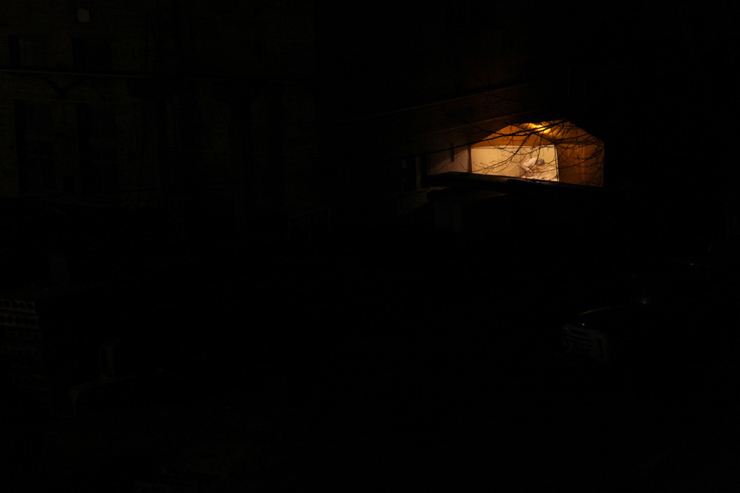
Roti at work in his studio. (photo © Chris Cunningham)
By trade, Roti is a stonecutter specialized in sculpture; in a separate pursuit, he’s negotiated illegality in public space via graffiti for the past decade. An artist in all regard, Roti’s surreal work depicts the spiritual realm, the intangible realities that exist in the mind. He’s found much success with his style, which has allowed him to travel with his work to New York, Atlanta, Paris and London.
However, it was his trip to Ukraine for the Gogol fest back in September of 2013 that sparked an intense appreciation and curiosity about the spirit of the art scene underway, predominately in the capital city of Kyiv. He spent a month deep within the community of artists who have “built beauty out of nothing;” in this experience, he learned how the individual could be a part of a collective. He promised to return, one day.
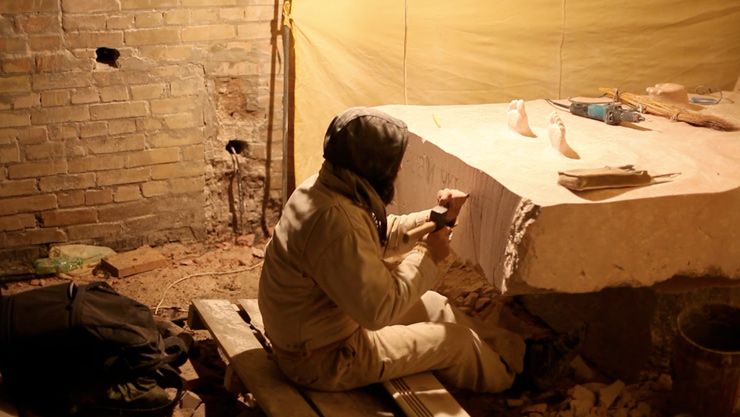
Roti at work in his studio. (screen shot from a yet to be released film © Chris Cunningham)
In late November of 2013, rumblings of a new revolution in Ukraine began. Acts of peaceful civil resistance and demonstrations activated Independence Square, the centre of Kyiv. These demonstrations were a direct response to president Yanukovych’s decision to retrench from trade agreements with the European Union in favor of a renewed arrangement with Russia.
The movement, affectionately referred to as “Euromaidan,” has been generally characterized in Western media as an aspiration for EU-integration. However, Ukrainians continue to endure freezing temperatures and police intimidation for a more humanist cause – they are through with Yanukovych’s corrupt government and they demand a better quality of life (the average Ukrainian earns about $300 per month).
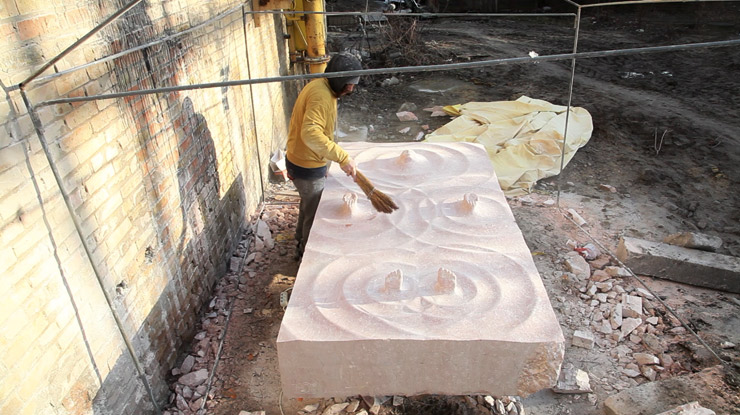
Roti at work in his studio. (screen shot from a yet to be released film © Chris Cunningham)
Roti, after observing the resistance through media outlets and Facebook feeds, felt a strong urge to return. Initially, he felt compelled to just be there. After much consideration, he realized he needed to do something. For months, he’d worked on the concept of a sculpture he assumed would install one day in Paris. Yet the movement happening in Ukraine assigned a new meaning to his initial idea – a woman, emerging from water – an allegory for the current revolution.
Two days after his initial proposal to several friends involved with Euromaidan, he booked a ticket to Kyiv. Two days after that, he miraculously managed to find a rose-marble stone and a workshop. The entire process fell into place so smoothly that his efficiency followed – generally, he would work 14-16 hours a day carving and polishing the stone. By the 13th day, the stone was complete.
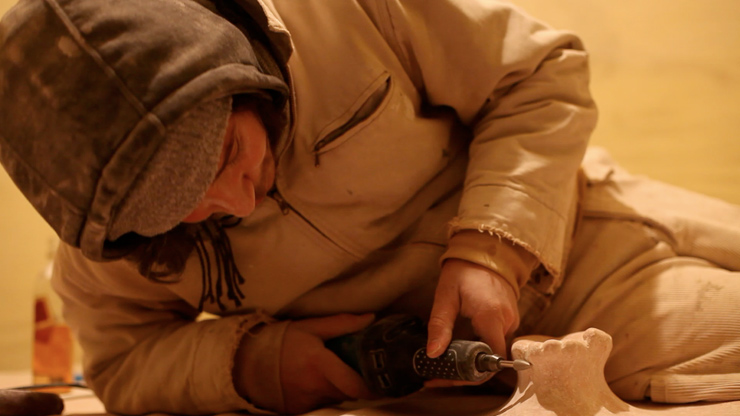
Roti at work in his studio. (screen shot from a yet to be released film © Chris Cunningham)
In the end, he saw life in the sculpture. The ripples had energy and movement. The face of the woman, while modeled after a friend and talented performer of the Dakh Daughters, represented the strength and perseverance of the Ukrainian population. Roti himself felt as if he’d emerged from a descent into the murky waters of insecurity. The sculpture, which he titled “New Ukraine,” became alive in symbolism, hope and energy – everything he felt during his experience and understanding of Euromaidan.
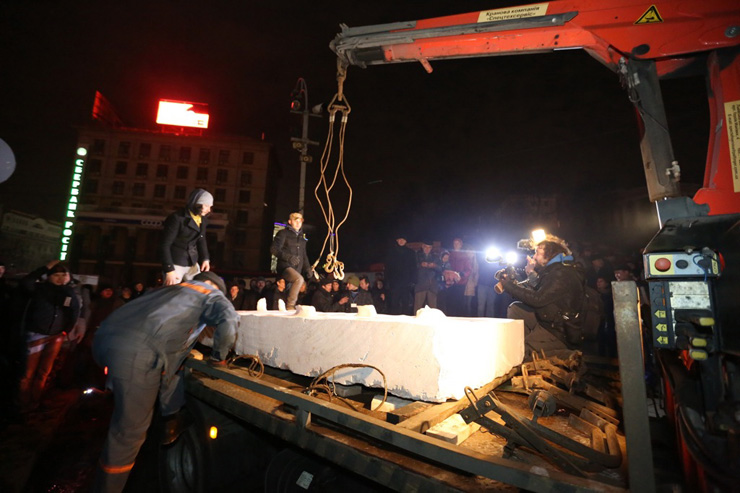
Roti (photo © Alexej Zaika)
The installation took place on the day of Orthodox Christmas, January 7, 2014. At around 6:00 p.m., the procession into Euromaidan began with the Dakh Daughters, who performed traditional Ukrainian folk songs about patriotism and freedom; a truck carrying the 4-tonnes sculpture trailed their spirited performance. “Around 200 people followed us into the centre,” Roti observed.
Everyone was curious, even confused, as no announcements had been officially made. This was, after all, an illegal installation. No authorization was given. However, it didn’t take long for those perplexed observers to understand why this was happening. “New Ukraine” was more than a gift; it was a proclamation of hope. After the sculpture was successfully hoisted from the truck to the ground, people sang and danced into the night in celebration.
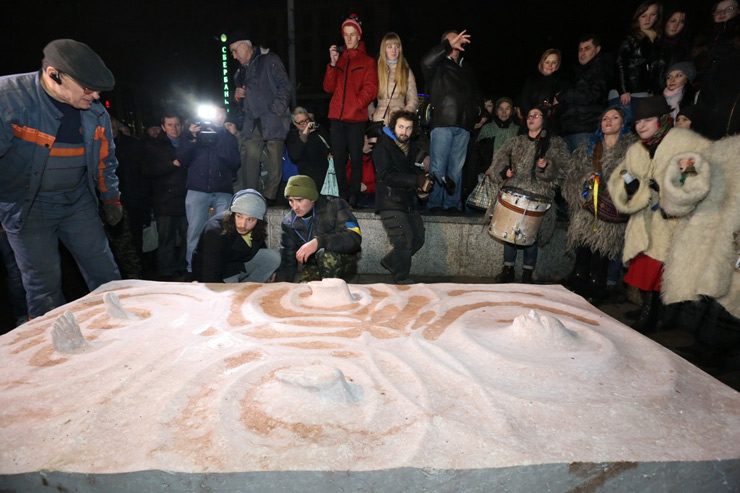
Roti (photo © Alexej Zaika)
Two months into Euromaidan, the celebration of Christmas and the “New Ukraine” sculpture were hardly indicators of an end to the protests, although demonstrations began to decrease in number. On January 16, Yanukovych forcefully passed legislation that would colossally curtail a number of free speech rights, notably the right to assemble and protest. This move sparked civil unrest that ultimately culminated into a violent stand off between protestors and police.
The first deaths of the revolution were reported in the week that followed. Protests spread to nine other cities across Ukraine, marking a fundamental shift in the Ukrainian revolution. While Yanokovych has agreed to make concessions towards peace, talks have yielded no success. The situation may seem dire to some, but there is some hope out of all of it. Increasingly more government buildings are now occupied and riot police and government troops are vastly outnumbered.
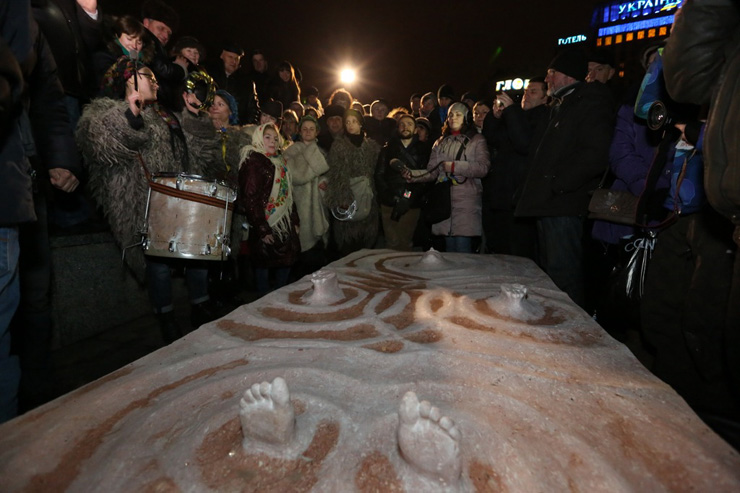
Roti (photo © Alexej Zaika)
Since the rise in tension, greater media attention has been given to the movement and supporters across the world have asked their leaders to enact concessions on the Ukrainian government. During the World Economic Forum in Switzerland Friday, January 24th, 50 Ukrainian sympathizers stood outside with signs that read “thank you for your concern, now do something.”
In a way, this sentiment can be addressed to many of us. Social movements and revolutions require more than assembly, they also command a shift in ideology and action. Roti’s “New Ukraine” sculpture in Kyiv is almost an unconscious rallying call to continue the independent and free ethos of graffiti with new disciplines.
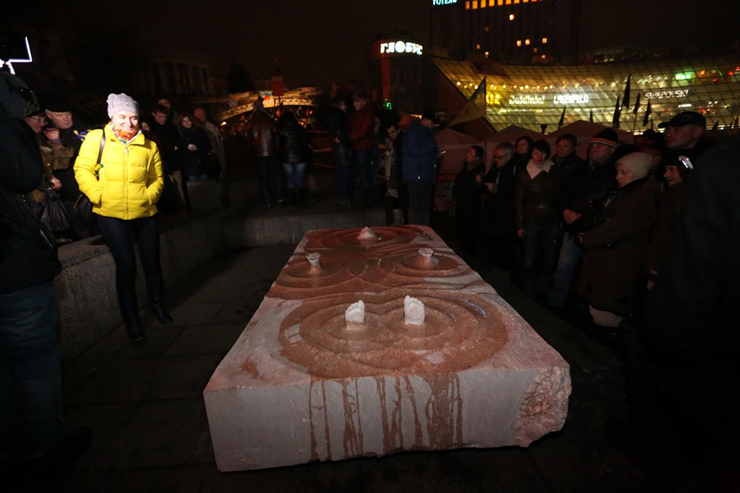
Roti (photo © Alexej Zaika)
“If I use art illegally, in the graffiti spirit, by giving all this energy inside the stone,” Roti explains, “it can leave an eternal trace of this movement.” Likely, this stone will remain for hundreds of years as a continuous reminder of the Ukrainian revolution.
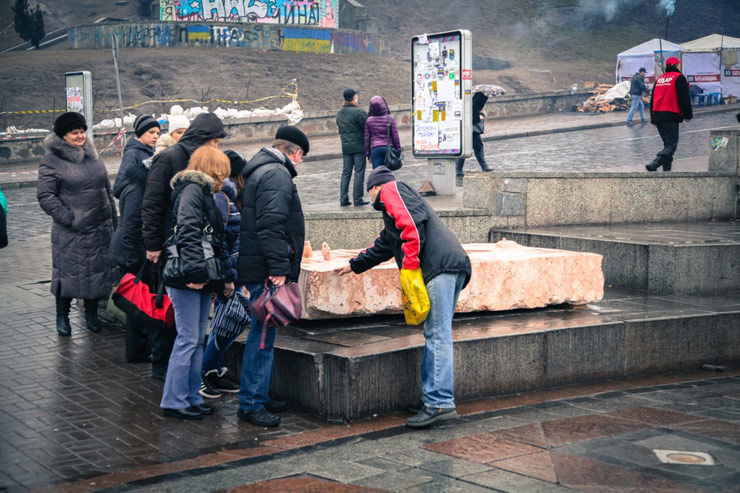
Roti (photo © Chris Cunningham)
This article also appears on The Huffington Post
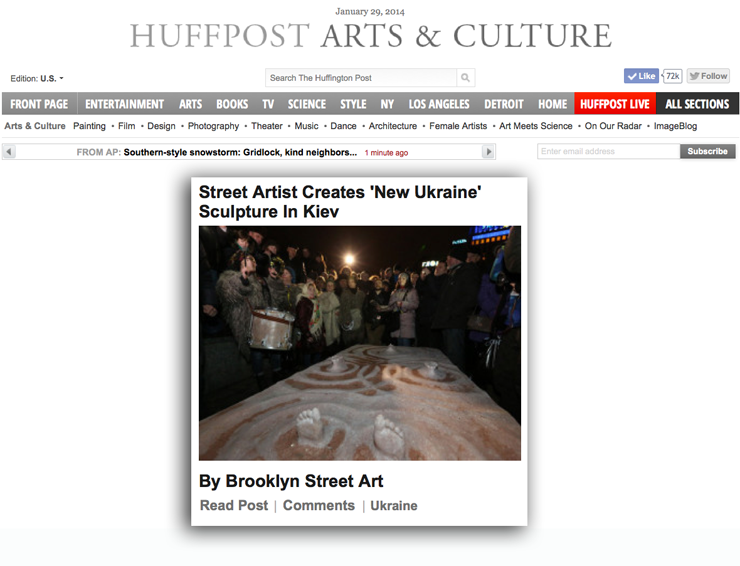
Our special thanks to Alex Parrish for sharing her essay with BSA readers.
<<>>><><<>BSA<<>>><<<>><><BSA<<>>><><<>BSA<<>>><<<>><><BSAPlease note: All content including images and text are © BrooklynStreetArt.com, unless otherwise noted. We like sharing BSA content for non-commercial purposes as long as you credit the photographer(s) and BSA, include a link to the original article URL and do not remove the photographer’s name from the .jpg file. Otherwise, please refrain from re-posting. Thanks!<<>>><><<>BSA<<>>><<<>><><BSA<<>>><><<>BSA<<>>><<<>><><BSA
 BROOKLYN STREET ART LOVES YOU MORE EVERY DAY
BROOKLYN STREET ART LOVES YOU MORE EVERY DAY